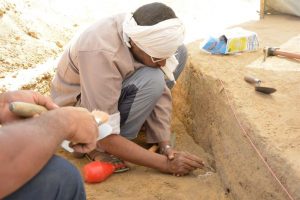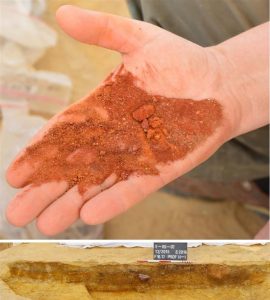Archaeologists from Institute of Archaeology and Ethnology of Polish Academy of Sciences conducted research in a remote area between modern Egypt and Sudan revealing Neolithic sites belonging to the early pastoral societies. The works, led by prof. Jacek Kabaciński are conducted in the vicinity of Gebel Remlah, located circa 140 km west of the Abu Simbel temples in southern Egypt.

In the distant past a large lake was located the region near Gebel Remlah and the Neolithic sites discovered by the archaeologists were placed by its shore. Traces of numerous settlements were found, dated to different periods of the Neolithic. Lack of traces of constructions impose that people lived in light tents and the settlements are identified only by storage and waste pits and small finds. Among the latter are querns, pestles, shattered pottery and animal bones such as gazelles or goats, sheep or cattle.

The fieldworks are being conducted since 2009 but last season a remarkable discovery was made as a workshop was discovered that served as a place where rocks rich in hematite were pulverised into ochre. The red powder was used in funeral ceremonies, which is indicated by discoveries of numerous burials covered with the pigment. These sites are the first of a kind discovered in the area of the Western Desert.

To the scientists it is clear that in the Late Neolithic and times after (5th cent. BC) the lake area was visited and partially settled by pastoral communities from North-western Africa, including shores of the Mediterranean and Sub-Saharan Africa. The lake was also the place were people were buried, initially (11000-8000 years ago) within the settlements and gradually away from them, until 5000 BC when separate cemeteries were constructed. The grave goods of typical burials consisted of pottery, jewellery and adornments from far away (such as f. ex. shells from the Red Sea).

The best climatic conditions existed in the area of the lake in 7th millennium BC, after which the climate gradually dried, the lake became a seasonal one until it completely vanished. This climatic crisis forced the pastoral communities to become more mobile through which they established contacts with other groups of people. In the end of the 5th millennium BC the herdsmen left their long settled territories at Gebel Remlah and travelled into the Nile valley, where water was abundant.
(after Nauka w Polsce & R. Kenig)